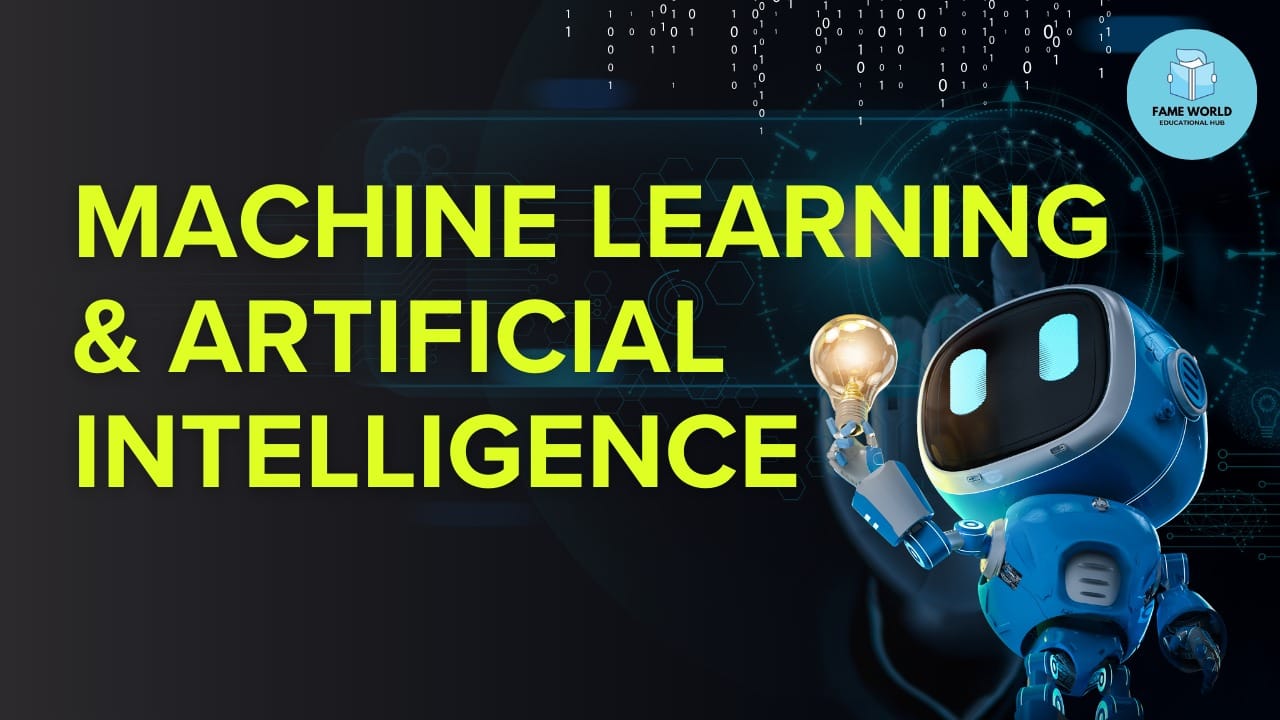Artificial Intelligence (AI) and Machine Learning (ML) have transitioned from academic concepts to transformative technologies shaping industries worldwide. From revolutionizing healthcare to redefining how businesses operate, AI and ML are everywhere. In this blog, we’ll explore their fundamentals, differences, applications, and how you can start your journey in this exciting domain.
💡 For a deeper understanding, don’t forget to watch this insightful video: Link
What Is Artificial Intelligence (AI)?
AI refers to the simulation of human intelligence by machines. It enables systems to perform tasks like reasoning, learning, problem-solving, and decision-making. Essentially, AI systems aim to mimic cognitive functions we associate with the human mind.
Types of AI
- Narrow AI: AI designed for specific tasks (e.g., Siri, Alexa).
- General AI: Hypothetical systems capable of performing any intellectual task that humans can do.
- Super AI: AI surpassing human intelligence (currently theoretical).
What Is Machine Learning (ML)?
ML is a subset of AI that focuses on enabling machines to learn from data and improve their performance over time without explicit programming. It uses algorithms to identify patterns and make decisions.
Types of Machine Learning
- Supervised Learning: Training data includes input-output pairs (e.g., spam detection in emails).
- Unsupervised Learning: No labeled data; focuses on finding hidden patterns (e.g., customer segmentation).
- Reinforcement Learning: Machines learn by interacting with the environment and receiving rewards or penalties.
How AI and ML Differ
| Feature | Artificial Intelligence | Machine Learning |
| Scope | Broader; encompasses ML and other areas. | A subset of AI focused on learning from data. |
| Goal | Mimic human intelligence holistically. | Improve performance on specific tasks. |
| Example | AI chatbot capable of understanding emotions. | ML model predicting house prices. |
Applications of AI and ML
1. Healthcare
- Predicting diseases with ML algorithms.
- AI-powered diagnostics and personalized treatment plans.
2. Finance
- Fraud detection using ML.
- Automated trading systems analyzing market data.
3. Retail
- AI for personalized shopping experiences.
- Inventory management using demand forecasting models.
4. Autonomous Vehicles
- Self-driving cars using computer vision and reinforcement learning.
Getting Started with AI and ML
Step 1: Understand the Basics
Familiarize yourself with foundational concepts in mathematics (linear algebra, calculus, statistics) and programming (Python is the preferred language).
Step 2: Learn Key Libraries
- For AI: TensorFlow, PyTorch.
- For ML: Scikit-learn, NumPy, Pandas.
Step 3: Explore Courses
Platforms like Coursera, edX, and Udemy offer comprehensive courses on AI and ML.
Step 4: Work on Projects
Apply your knowledge to real-world problems:
- Build a predictive model.
- Create a chatbot.
- Work on image recognition.
Challenges in AI and ML
Despite their transformative power, AI and ML face challenges:
- Data Dependency: Quality and quantity of data are critical.
- Bias and Fairness: Models may inherit biases from training data.
- Ethics and Privacy: Ensuring AI respects user privacy and operates ethically.
The Future of AI and ML
AI and ML are poised to redefine how we interact with technology. With advancements in natural language processing, computer vision, and autonomous systems, the possibilities are limitless. However, navigating these advancements responsibly will be crucial.
Watch This Video for More Insights
💻 If you’re intrigued by the potential of AI and ML, check out this amazing video for a detailed walkthrough of concepts, real-world examples, and career tips.
Conclusion
Artificial Intelligence and Machine Learning are not just buzzwords—they are catalysts for change. Whether you’re a student, professional, or enthusiast, diving into AI/ML can be a rewarding journey. Start small, build consistently, and soon you’ll be contributing to shaping the future.
Additional learning resources:
- IOT TUTORIAL SERIES – Link
- PYTHON PROGRAMMING TUTORIAL SERIES – Link
- CAREER TIPS – Link
- CLOUD COMPUTING – Link
- MERN FULL STACK WEB DEVELOPMENT – Link
- DJANGO SERIES – Link
- DIGITAL MARKETING – Link
- C LANGUAGE – Link
- CODING INTERVIEW PREPRATION – Link
- NEW AI TOOLS – Link
- PYTHONISTA FOR PYTHON LOVERS – Link
- ARTIFICIAL INTELLIGENCE – Link
- MACHINE LEARNING USING PYTHON – Link
- DBMS – Link
- PYTHON PROGRAMMING QUIZ SERIES – Link
- BLOCKCHAIN TECHNOLOGY TUTORIAL SERIES – Link
- NETWORKING QUIZ SERIES – Link
- CYBER SECURITY Q&A SERIES – Link
- PROGRAMMING RELATED STUFF – Link
- PYTHON Q&A SERIES – Link



